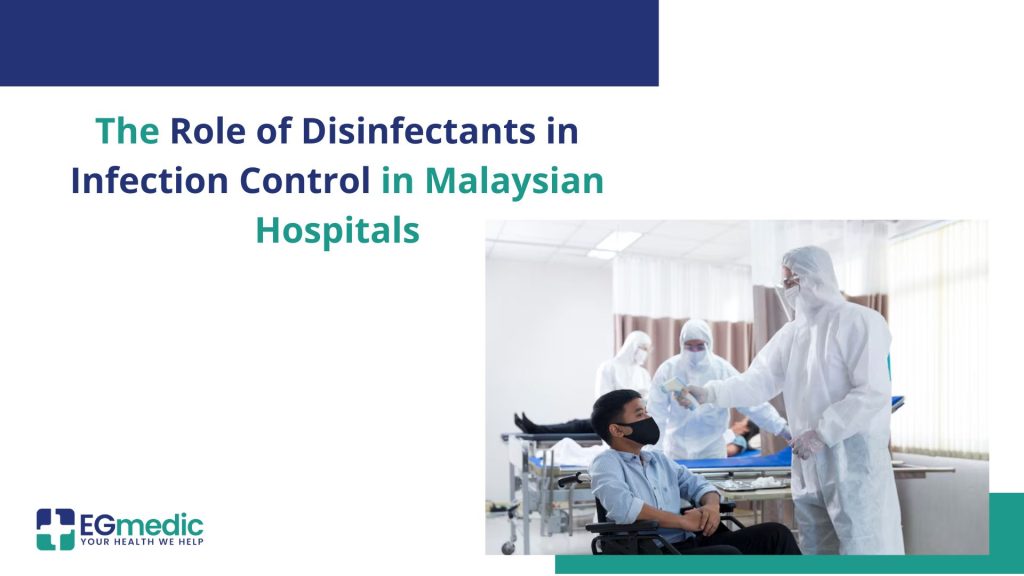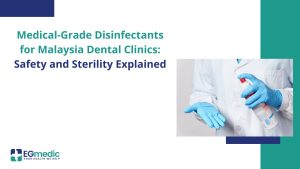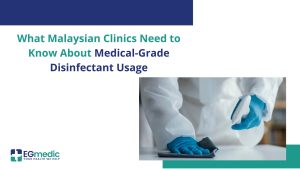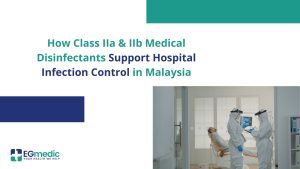Why Infection Control Is Crucial in Malaysian Hospitals
Malaysian hospitals, like healthcare institutions worldwide, face increasing pressure to combat hospital-acquired infections (HAIs). These infections, including MRSA, C. difficile, and multidrug-resistant bacteria, pose a serious risk to immunocompromised patients and increase treatment costs.
According to the Ministry of Health Malaysia, infection control protocols are mandatory and must align with global standards such as WHO guidelines and MOH’s Infection Control Manual. Regular disinfection of patient rooms, surgical wards, ICUs, and diagnostic labs is not only a best practice—it’s a legal and ethical obligation.
How Disinfectants Help Prevent the Spread of Infections
Disinfectants are chemical agents used to destroy or inhibit microorganisms on surfaces and equipment. In hospital settings, this includes:
- Surface disinfectants for patient beds, tables, and doorknobs
- Instrument disinfectants for surgical tools and medical devices
- Air and environmental sanitizers to reduce airborne pathogens
Using broad-spectrum disinfectants that are proven to eliminate bacteria, viruses, and fungi is key to preventing outbreaks. For example, quaternary ammonium compounds (quats) and chlorine-based disinfectants are commonly used in Malaysian hospitals.
Moreover, disinfectants used in hospitals must meet the standards of:
- Effectiveness (log reduction of pathogens)
- Safety for patients and healthcare staff
- Material compatibility to avoid damage to equipment
Regular training and monitoring are also necessary to ensure proper application and avoid resistance.
Conclusion
The use of effective disinfectants in Malaysian hospitals is an essential part of infection control strategies. With growing threats from antibiotic-resistant bacteria and increasing patient volumes, healthcare providers must prioritize hygiene at every level. EG Medic supports this mission with certified, hospital-grade disinfectants tailored to Malaysia’s medical landscape.







